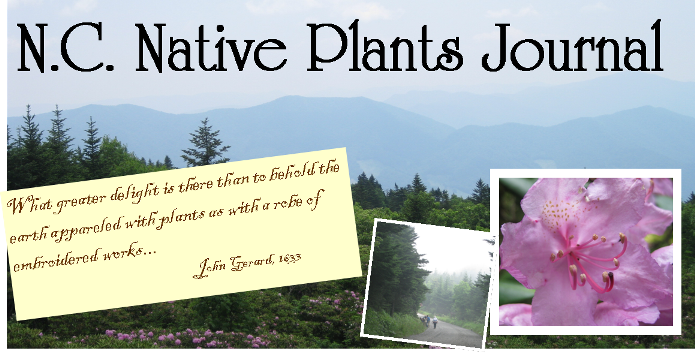
Raised just a little further north than I currently live, I find it difficult to turn on the air-conditioner until we are at least into June, and preferably not until the official beginning of summer on June 21st. That means our windows stay open and our windowsills, tables and floors are covered through spring with a fine, silky yellow-green coating of pollen. No matter how often I dust, which in truth isn’t often, it isn’t long before the cover is back.
One afternoon, while sitting on a screened porch just thinking about how lovely the day was and how much I should be doing at the moment, I watched a large, old white pine across the street as it ly waved in gentle breezes. Before long, great billowing clouds of yellow-green puffed out from all the branches in unison and floated off to the west. The great puffs, for that’s the only way I can describe them, occurred repeatedly over the course of 30 minutes or so, which explains the quantity of pollen appearing on my windowsills.
Pines aren’t the only plants spitting out their pollen—grasses, flowering plants, shrubs, vines and trees all produce pollen as a part of their reproductive efforts. Wind isn’t the only trigger for pollen release, either. Some plants are designed to eject pollen on their own schedule. As pollen-bearing anthers mature and dry, they split open and release the pollen grains to fall onto other flowers, or are moved to other flowers by rain. Pollen release can be triggered by the movements of bumblebees or birds. A great variety of insects, butterflies and moths pick up pollen on their legs or backs, carrying it to pollinate the next flower they visit.
All of this movement means that pollen, as tiny as it is, has to be tough. It has to survive wind, rain, and travel to successfully complete its task. It has to be produced in huge quantities, too—far more than could ever actually be used.
Because of its strength and quantity, pollen is often found in fossil records. Falling to the ground in deepening mats, settling in peat bogs, it is preserved for eternity, or so it seems. The earliest such record was from the late Paleozoic era, about 400 million years ago, when fish first began to move from the murky seas onto the land and ferns were trees. Pollen can tell us about both the abundance and variety of plant life, identifying what plants were growing at the time.
There is even the relatively new branch of forensic science that studies pollen found in crime scene investigations. Pollen is regularly deposited on victims, objects, and suspects, and studying that pollen can provide links from one to the other.
Plant pollen that travels by wind is often the greatest in quantity, as much simply falls to the ground, or on top of cars, and is lost. Flowers that are pollinated by insects usually produce far less—only enough to assure that sufficient is available for more than one insect visitor in case the first visitor fails to do the job. Some of the pollen picked up by insects, bees for instance, is taken back to the hive to be stored as a future food source. In this sense, the bees are taking more than their fair share, since they take nectar, too, but the food it provides to developing bee larvae assures future pollinators.
Many pollinators, including hummingbirds and butterflies, are interested only in nectar. The pollen they pick up and distribute is, to them, accidental. To plants designed to be attractive to these insects, the action is essential. Flowers are often matched to provide a welcome feeding station to the insects that will do the job. Flowers with a flat surface, Queen Anne’s lace (not a native, by the way) for instance, provide a good landing surface for butterflies. Passion flowers (Passiflora incarnata and P. lutea) have structures that work efficiently only for certain wasps, whose backs are coated with pollen as they sip nectar from the flowers. Some flowers, many in the Lamiaceae family, have “landing pads” for insects that are triggered to open and offer up their nectar only by an insect with a certain weight and probiscus (tongue) length.
Flowers are amazingly complex-- if you keep a little magnifying glass with you this summer and look deeply into the flowers, you will find yourself in a new world.
My windowsills aren’t the only measure of pollen. Allergy sufferers don’t need television weather reporters to give them daily pollen counts—their noses and lungs do that job for them. The fine grains, which feel silken between the fingers, can have spiky, rough surfaces that irritate tissues in our noses and lungs, causing from mild itchiness to great difficulty breathing. The rough surfaces assure that the pollen enters matching stigmas, pollinating a flower to produce seed for next year’s crop. It makes a lot of people lethargic, too, though I can only blame my own waning energy on advancing age.






